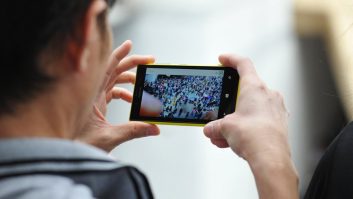Those looking for clues as to how the mobile TV market will shake out in Europe could do worse than look towards Korea for clues, writes Chris Forrester.
Korea’s twin DMB mobile TV offerings have been an instant and convincing success. Their T-DMB system is simply a runaway triumph since launch on 1st December 2005, and given it’s free to the consumer (once the handset or mobile device has been bought) there’s not much surprise that it already has 1.428m subscribers (at 31st July), and is forecasting between 2.5m-3m by year-end (and 5m by the end of next year).
And Korea’s MBC broadcaster, which backs the system, coyly says it is still in a trial phase! Transmissions are in the VHF Band 111 (174-216MHz) using MPEG-4 compression. Currently, signals are received by phones/portable receivers and dedicated kit within vehicles, but laptops are now appearing with the hardware built in and this winter an increasing number of cameras and PDAs will come pre-configured for the technology.
T-DMB has three service operators, with seven multiplexed ‘channels’ potentially available. Today, six services are up and running: three come from existing channels, with some 80% of transmissions simulcast. Three new channels come from new suppliers which are by and large assembling content from outside the existing broadcast system.
Tu-Media’s satellite system is very different, not least because it’s a pay-TV service costing $20 to sign up and thereafter about $13 a month for 12 video and 26 audio channels. It went live in May 2005 and has won more than 700,000 subscribers to date. Its service offering is more compelling and has an attractive line-up of some 40 different phones, mobile receivers and vehicle receivers for users to buy into.
Of the dozen video channels, 10 are more or less simulcast from existing high-profile channels, and two are assembled specially for Tu-Media. Young-Bae Kim, a VP at Tu-Media, says they have been amazed at the statistics now emerging from their reasonably large subscriber base. First up, some 30% of users are aged over 40. This might have something to do with both the subscription level as well as the cost of the mobile phones – measured in the hundreds of dollars. Second fact: the average viewing time per day is 55 minutes, again perhaps helped by the long commuting times in metropolitan Seoul. The 59 minutes/day average usage pattern is almost exactly matched by the T-DMB service, which, while having some 2% of users glued to their screens for more than 150 minutes a day, 45% are in the 31min-90min range.
The system has cost more than $200m to establish. Kim admitted that there was early public confusion about the two different systems, “but that’s now a thing of the past. There’s lots of education at the point of sale, for example. There’s also plenty of natural awareness, helped by the competition between the free-to-air model and pay-TV.” Questioned on how important short-form ‘clip’ programming was, Kim replied: “We absolutely thought short-form would be popular, but we quickly discovered that people wanted high-quality TV including broadcast movies and drama, as well as sport including baseball, and simulcast from normal TV.”
According to the latest market research, some 10-18m Koreans will buy into one or other of the above systems, creating a whole new market for television. And there is little confusion: by and large they’ll be watching long-form linear entertainment.







